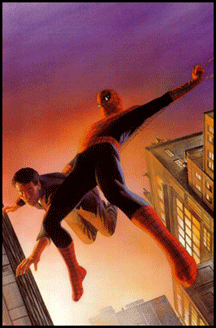
 |
|
Using comic books in the classroom still has a long way to go before the practice is accepted by most educators, but Lapin, Tandarich, and Bitz are looking toward the future. They are promoting theeir respective programs to education systems, and they each said they believe their programs are having a positive impact on the students who participate. Lapin's latest books will be released during the summer of 2005 through Harlequin Press and are available on-line and at book stores throughout the country. Further information on Tandarich’s C.O.M.I.C.S. program can be found at the New York City Comic Book Museum’s website, www.nyccomicbookmuseum.org. The site offers sample pages and an introduction to their program. The materials for and the results of the Comic Book Project can be found at its homepage, www.comicbookproject.org. The site includes examples of the comic books created by school children participating in this course and includes information for teachers interested in getting Bitz’s materials to start the program in their own schools.
|
||||||||
 |
||||||||
Midtown Comics, a store that donates comic books to various educational programs. |
||||||||
The data necessary to accurately gauge the educational values of comic books may not be available for some time, but to many, comics have always been and always will be an instrument for children to learn from. According to Gerry Gladston, 43, co-owner of Midtown Comics in New York City and a father of two, he sees the value of comic books firsthand everyday and while he supports comics being used in schools, he said they also teach something that cannot be assessed by standardized testing or studies. “Comic books, like Spider-man, offer wonderful moral values to kids and adults,” said Gladston. “Peter Parker, [Spider-man], is a character of profound moral fiber. There’s a lot that any kid could really learn from and be inspired by from reading those stories.”
|
 |
|||||||
| back to the top | ||||||||